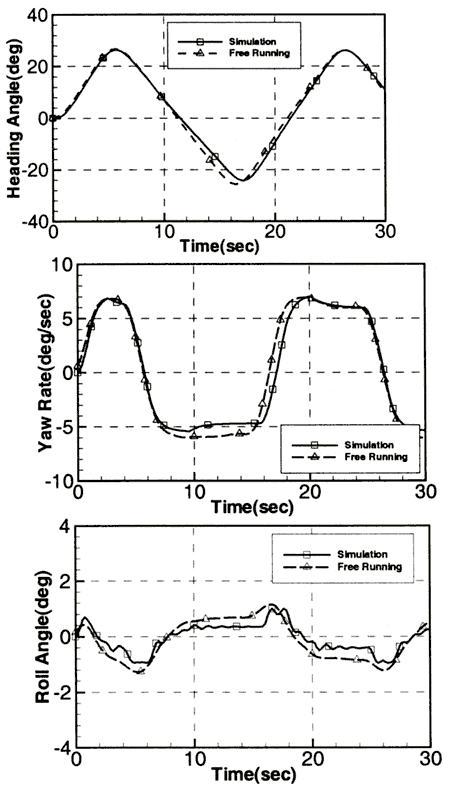Fig.14 |
Simulated Results for 20°/20°Zig-Zag Maneuver at Ballast Condition. |

Finally, the effects of GM on the maneuvering motion are investigated. Fig. 15 and Fig. 16 show the variation of maneuvering indices with GM for turning and zig-zag maneuvers respectively. Here simulation data both at model and ship propulsion point and free running data are displayed together. The simulation data for GM=1m is added to see what will happen if designed GM is very low. In case of turning, the advance and tactical diameter decreases as GM decreases. The large container ship seems to have no problem in satisfying IMO standards for turning whatever GM. In case of zig-zag maneuver, however, the overshoot angle increases greatly with decrease of GM. The change is particularly high when GM is smaller than certain level. Although the large container ship satisfies the IMO standards with designed GM(=2.6m), she does not satisfy some criteria with lower GM(=1m). She does not satisfy the criteria for 1st overshoot angle of 20°/20°zig-zag maneuver with in terms of simulation data at ship propulsion point. The 1st and 2nd overshoot angles of 10°/10°zig-zag maueuver are also very close to the criteria. All three data, simulations and free running data, in Fig. 16 indicate that the large container ship is in danger of not satisfying the criteria of 1st overshoot angles for 10°/10°zig-zag and 20°/20°zig-zag maneuver if GM becomes small below certain level.
Fig.15 |
Effects of Propeller Loading on the Turning and Zig-Zag Maneuvers : Full Load |
|